Back to the basics: The fundamentals of
FF&E purchasing
08 JANUARY 2019 8:21 AM
Here’s a look at the key elements of the FF&E purchasing process you should know before starting a CapEx project.
As we are in a period of both record demand for furniture, fixtures and equipment and uncertainty in the global supply chain due to evolving world trade
challenges, I feel it is important to go back and review the key elements of the FF&E purchasing process.
First, make sure every project is clearly defined and the project’s goals are accurately communicated to all stakeholders.
I know it sounds obvious, but make sure everyone on the project team is working off the same schedule and budget, and any changes are communicated in a
timely manner to every party. When there are new decisions to be made, or suggestions or revisions to the scope, it is beneficial to return to the foundational
issues of scope, schedule, budget and stated project goal. Without this discipline, scope creep and the ensuing budget and schedule challenges will have a
higher possibility of occurring.
Understand the budget
One of the initial questions that comes to purchasing firms such as Benjamin West is the request to establish a “cost per key” budget. As I have mentioned in
past ISHC CapEx books, there is no single more dangerous question in terms of CapEx in our industry. Not only are there significant differences among
assets that share a brand, but this question also pertains to the scope definition. Is the cost per key the cost of just the FF&E behind the guestroom door?
Does it include the bathroom? What about the corridors? Is it the total amount spent on all areas, including all public spaces and food and beverage divided by
the number of keys? Is it product only, or does it include any or all soft costs, such as project management, architectural, interior design, purchasing, freight,
warehouse, demo and install costs? Does union labor need to be considered? What about operating supplies and equipment (OS&E)?
Which brings me to the next key item: universal definitions. Frankly, there are none for FF&E and OS&E, nor for “soft
goods” or “full renovation.” FF&E stands for furniture, fixtures and equipment. The largest cause for confusion is in the
“E” as it may include for some owners equipment, such as door locks, phone systems, computer systems and
commercial kitchen and laundry equipment. These items are not typically purchased by the FF&E firm. Some in the
industry use the term “FF&A” and the “A” can stand for both accessories or art. OS&E, which stands for “operating
supplies and equipment,” mostly covers items that the guest uses, and that are not capital purchases. However, ice
machines, and, for some owners and brands, even beds, banquet chairs, makeup mirrors and TVs, which most classify
as FF&E, are in a firm’s OS&E scope.
To make sense of every detail, and to ensure that a key item is neither left off nor being handled by two firms at once,
every project needs a good responsibilities matrix, also known as a differentiation document or “Diff Doc.” Do not start
any project without one. It will clearly state who is responsible to specify, purchase and receive/install every item from
seating to floor covering to hardwired lighting to bicycle racks and employee breakroom lockers.
Compare vendors
Another universal best practice involves model rooms. First, do at least one model room. At the model room review,
ensure the purchasing agent is coming with production pricing for each vendor used. The cost of the one-off sample for
the model room is not relevant to the project’s overall budget, but in comparing different vendors, the cost for the
production run often represents large changes to the budget. Everyone might agree that “vendor A” has the better desk
lamp, but if the difference for the production run is $20,000 and that money is needed for the better lounge chair, then
maybe the desk lamp from “vendor B” with the less sophisticated finish but still great quality and light output will
suffice. The model room is where the final value engineering process occurs.
Teams matter
When assembling your team, do not be tempted by low fees. We have all experienced the universal truth of “if it looks too good to be true, it probably is” in
many aspects of life. Remember, even for a renovation with a relatively small scope, the shortest period of time you will be living with the project team is six
to nine months, with 18-24 months being a more typical duration.
Also, do you really have any project at any asset that doesn’t need to be delivered and installed on time, on budget and with an accurate, to the penny,
Opinions
abenjamin@benjaminwest.com
@BenjaminWestUSA
By Alan Benjamin
Copyright © 2008-2019 STR, Inc. Page 1 / 2
Teams matter
When assembling your team, do not be tempted by low fees. We have all experienced the universal truth of “if it looks too good to be true, it probably is” in
many aspects of life. Remember, even for a renovation with a relatively small scope, the shortest period of time you will be living with the project team is six
to nine months, with 18-24 months being a more typical duration.
Also, do you really have any project at any asset that doesn’t need to be delivered and installed on time, on budget and with an accurate, to the penny,
accounting process? With all the states running low on revenue, they are looking at every potential sales tax dollar, so you must have a firm whose accounting
process is geared to the highest-level NYSE public firms to handle sales tax accrual, tax on freight, tax on fee, general ledger depreciation coding, etc. For
example, five states have no tax on freight, while 14 do not tax freight if a third-party logistics firm (not the vendor’s own traffic department) is routing the
shipment and 31 states tax the freight regardless of who is handling the routing. Today, a purchasing firm’s accounting depth and experience is as important
as its vendor relationships and negotiating ability.
Therefore, when it comes to systems and reporting, we are continually investing to improve both our purchasing and accounting system technology. However,
at the end of the day, it is people and relationships that matter. It is still a people-to-people business, and humans make decisions. Humans, not systems, shave
the 16-week lead time down to 12 weeks; humans lower the cost for the special project; humans turn the “no” into a “yes.” Systems are great for reporting,
but people make it happen. Be sure to hire the best people, supported by the best systems, to ensure success in every CapEx project during these challenging
times.
This article is an excerpt from ISHC CapEx 2018: A Study of Capital Expenditures in the Hotel Industry. The book presents data on trends in capital
expenditures by various hotel segments, including full service, select service and extended stay and will be available January 28th, 2019. Visit ishc.com/ishccap-
ex/ for more information.
Alan Benjamin is one of the world’s leading hospitality Furniture, Fixtures and Equipment (FF&E) experts. He is president Benjamin West, LLLP, the FF&E and OS&E purchasing firm based in
Boulder, Colorado, with additional offices in Chicago, Dallas, London and New Delhi.
The opinions expressed in this column do not necessarily reflect the opinions of Hotel News Now or its parent company, STR, and its affiliated companies. Columnists published on this site are given
the freedom to express views that may be controversial, but our goal is to provoke thought and constructive discussion within our reader community. Please feel free to comment or contact an editor
with any questions or concerns.
Copyright © 2008-2019 STR, Inc. Page 2 / 2

